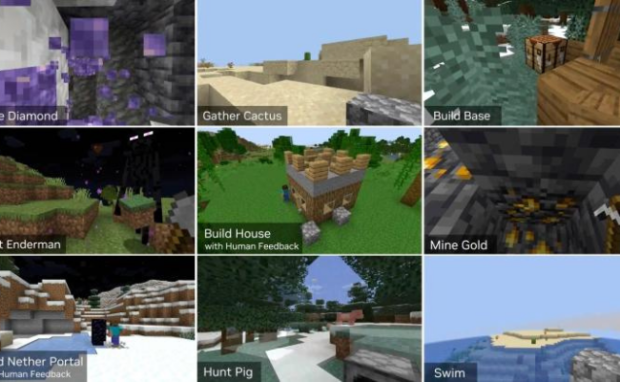Voyager AI Uses GPT-4 To Become A Minecraft Pro
Nvidia researchers created the Voyager AI, a bot that learned how to become a Minecraft expert. It is an experimental AI program that learned how to play that video game through trial and error guided by GPT-4. Eventually, the AI model became adept at playing the game, opening new possibilities for this technology.
Many people have been discussing how ChatGPT will spark the creation of an AI that can think and learn by itself. It seems we will see it sooner than expected, thanks to Voyager. This AI program shows we can create artificial intelligence systems that adapt to their environment. Soon, it could lead to robots that can perform complicated workplace tasks.
This article will discuss how Voyager AI uses GPT-4 to become an expert Minecraft player. Then, I will compare this artificial intelligence with similar automation systems to show how far this technology has progressed.
How does Voyager AI work?

Photo Credit: techcrunch.com
Voyager AI does not play Minecraft like a human. Instead, it uses GPT-4 to learn about its surroundings. GPT-4 is the large language model that powers ChatGPT.
Let us say Voyager notices sticks and stone blocks. It will ask GPT-4 about these in-game objects, and it may recommend turning them into a pickaxe.
What if the AI program makes a mistake? It will improve its behaviors using error messages, feedback from the game, and GPT-4 code descriptions.
Eventually, Voyager compiles its learning into a general skill library. It can refer to those skills for various situations instead of adapting to them from scratch.
Let’s say the Minecraft AI fought sheep in the wilderness. Later, it needs to explore a cave for iron ore. However, subterranean areas usually have enemies like skeletons.
Voyager can use its previous battle experiences to use its sword on the skeletons and pickaxe on the ore. The Nvidia researchers tried using the old OpenAI model, GPT-3.5.
However, Voyager AI couldn’t organically learn the game’s mechanics and adapt using that LLM. Only GPT-4 allowed the program to become an “embodied agent.”
That is an artificial intelligence that can move and act freely in a simulated or real environment. Soon, we might see this technology powering future robots.
You may also like: ChatGPT Experience Is More Valuable Than A College Degree
You could think of workplaces as simulated game worlds. They have limited space and common tools and equipment, such as chairs and boxes.
Integrate Voyager AI into a robot, and leave it in a workplace simulation. Eventually, it may learn to perform office tasks and communicate with human colleagues.
Of course, turning that scenario into reality will require more research. Nevertheless, we should expect to see it soon as more people and companies develop AI products and services.
Voyager AI vs. other programs
What if we set GPT-4 free in Minecraft? ⛏️
I’m excited to announce Voyager, the first lifelong learning agent that plays Minecraft purely in-context. Voyager continuously improves itself by writing, refining, committing, and retrieving *code* from a skill library.
GPT-4 unlocks… pic.twitter.com/hjTxk6Qb1x
— Jim Fan (@DrJimFan) May 26, 2023
Numerous other AI systems have been automating tasks and adapting to virtual environments. However, they do not match Voyager’s performance.
For example, AutoGPT lets people automate various tasks on other computer programs. If it encounters an unfamiliar interface, it will teach itself to navigate it to achieve its goal.
However, Voyager AI can adapt to wider environments than AutoGPT. Also, other AI algorithms have been trained on video games before the Nvidia team experiment.
For example, AlphaGo mastered one of the most complicated board games of all time, Go, in 2016. It uses reinforcement learning to play the game using positive and negative feedback.
You may also like: ChatGPT Bug Bounty Program Lets You Earn $20,000
For example, it will continue using a move if it earns points and stops if it loses. In contrast, AlphaGo would likely struggle to adapt to an open-world game like Minecraft.
Unlike Go, Minecraft does not have a specific goal. Players explore the game and do whatever they want, such as building homes or finding new items.
Voyager AI was able to adapt and become an expert in this game. As a result, its versatility could turn it into an essential component for future workplace robots.
Conclusion
Voyager AI could play Minecraft by referring to GPT-4 and numerous trials and errors. It outshines older AI programs by learning by itself instead of prior training.
It seems a step closer to creating artificial general intelligence and AI that can think and behave like humans. However, we may need to wait more years before it becomes real.
Artificial intelligence has been transforming other parts of daily life. Learn more about its impact and other digital trends by following Inquirer Tech.